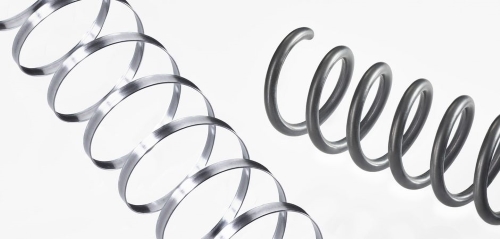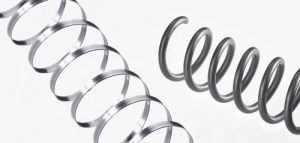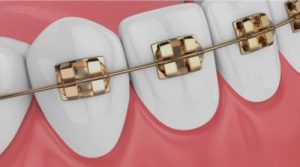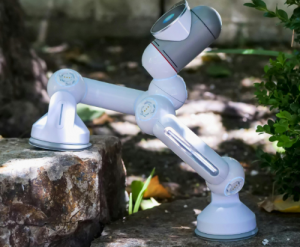Nitinol: Diverse Products and Applications

Introduction
Nitinol, an alloy composed primarily of nickel and titanium, has become a cornerstone material in various industries due to its unique properties, particularly its shape memory and superelasticity. These characteristics make Nitinol a versatile material with applications ranging from medical devices to aerospace technologies. This article will discuss its diverse products and applications, showcasing how this remarkable alloy is transforming industries.
Nitinol: Benefits and Features
Nitinol's most notable features are its shape memory effect and superelasticity.
- The shape memory effect allows Nitinol to return to its pre-deformed shape when heated above a certain temperature. This property is invaluable in applications requiring precise control and actuation.
- Superelasticity, on the other hand, enables Nitinol to undergo significant deformation without permanent damage, making it ideal for applications where flexibility and durability are critical.
- In addition to these key properties, Nitinol is biocompatible, corrosion-resistant, and has a high fatigue life. These attributes make it particularly well-suited for medical applications, where materials must withstand harsh bodily environments and repeated stress.
- Moreover, Nitinol’s unique combination of properties allows it to be used in applications where traditional materials fall short, offering innovative solutions across various fields.

Related reading: Nitinol – Amazing Shape Memory Alloy
Nitinol Wire: Precision and Flexibility
Nitinol wire is used in applications where both accuracy and flexibility are essential:
- Medical Uses: Nitinol wire is commonly found in stents, guidewires, and orthodontic archwires. For instance, in stents, the wire can be compressed for insertion into the body, and then it expands to support blood vessels once in place.

- Robotics and Automation: In robotics, Nitinol wire is used because it can return to a set shape with great precision. Its flexibility also makes it ideal for sensors and actuators, helping develop advanced wearable technologies and other dynamic systems.

Nitinol Tubing: Revolutionizing Medical Procedures
Nitinol tubing is another product that has greatly impacted medical procedures:
- Minimally Invasive Surgeries: Nitinol tubing is flexible and safe for use inside the body, making it perfect for surgeries that require tools to move through tight and complex areas.
- Advanced Medical Devices: Nitinol tubing is used in catheters, endoscopic devices, and self-expanding stents. These devices can expand and contract as needed, allowing doctors to perform procedures with greater precision and better results for patients.
Nitinol Sheets and Plates: Innovations in Actuation and Sensing
Nitinol sheets and plates are used in areas where movement and sensing are important:
- Actuation: Nitinol sheets can change shape when the temperature changes, which makes them ideal for use in thermal actuators and switches in industries like aerospace and automotive.
- Sensing: Nitinol’s sensitivity to temperature changes allows it to be used as a thermal sensor. Its durability and flexibility also make it great for monitoring the structural health of various systems, opening new possibilities in smart materials and adaptive technologies.
Nitinol Springs and Fasteners: Enhancing Durability
Nitinol springs and fasteners are known for their durability:
- Aerospace: Nitinol springs are used in aircraft because they can withstand extreme temperatures and repeated use without losing their strength.
- Automotive: Nitinol fasteners are gaining popularity in cars because they maintain tension well, reducing the need for frequent maintenance. The combination of shape memory and flexibility makes these products extremely reliable in demanding conditions.
Nitinol in Orthodontics and Guidewires: Transforming Patient Care
Nitinol is transforming patient care in orthodontics and guidewires:
- Orthodontics: Nitinol archwires are preferred over traditional steel wires because they apply gentle, consistent pressure, making treatments more effective and comfortable for patients.
- Guidewires: Nitinol guidewires are essential in surgeries, especially in navigating blood vessels. Their flexibility and ability to return to a straight shape make them precise and reduce the risk of complications during procedures.
| Nitinol Product | Applications | Specific Examples | Notable Features |
| Nitinol Wire | Medical | (stents, guidewires, orthodontic archwires) | Shape memory effect, Superelasticity, High fatigue resistance |
| Robotics | (sensors, actuators) | ||
| Nitinol Tubing | Medical | (catheters, endoscopic devices, self-expanding stents) | Biocompatibility, Flexibility for navigation in complex structures, Minimal invasive surgery |
| Nitinol Sheets and Plates | Aerospace | (thermal actuators, switches) | Thermal sensitivity for actuation, Durability under mechanical stress, Corrosion resistance |
| Automotive | (adaptive components) | ||
| Nitinol Springs and Fasteners | Aerospace | (high-temperature springs) | Superelasticity for repeated use, High durability in extreme conditions |
| Automotive | (reliable fasteners) | ||
| Nitinol in Orthodontics and Guidewires | Orthodontics | (archwires for braces) | Gentle and consistent force application, Flexibility and precision for delicate procedures |
| Medical | (guidewires for vascular surgery) |
For more details, please check Advanced Refractory Metals (ARM).
Conclusion
Nitinol’s unique combination of shape memory, flexibility, biocompatibility, and resistance to corrosion has made it an essential material in many industries. From medical devices to aerospace components, Nitinol’s various products—such as wires, tubing, sheets, plates, springs, and fasteners—are driving innovation and improving the safety and performance of numerous systems. As technology continues to advance, Nitinol will likely play an even more significant role in shaping the future of engineering, medicine, and beyond.
{{item.content}}
LEVE A REPLY
{{item.children[0].content}}
{{item.content}}






